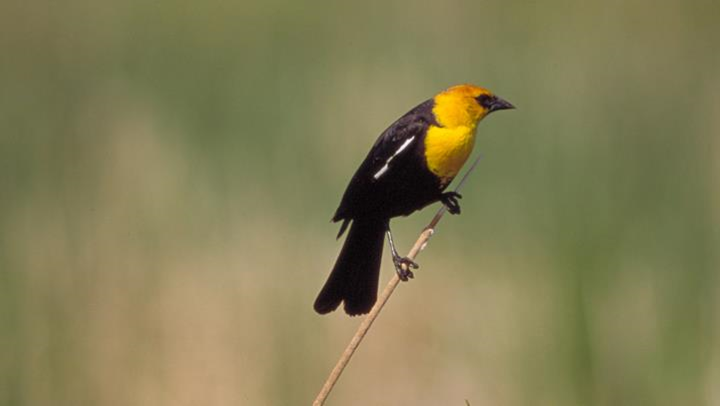Xanthocephalus xanthocephalus

Unmistakable in appearance, the most descriptive name award goes to the Yellow-headed Blackbird!
Habitat
Look for Yellow-headed Blackbirds in larger marshes and ponds, or along rivers, with lots of cattails, rushes, or reeds. In summer they range from British Columbia to Manitoba in Canada, and in the northern United States from Lake Michigan to interior Washington state, south to New Mexico. Winter takes them to Mexico and Texas, New Mexico, and Arizona, in the United States.
Food
Yellow-headed Blackbirds eat insects in summer and seeds in winter.
Behaviour
Males establish territories in the middle, deeper water areas of marshes. A male attracts up to eight females that then nest in his territory. She usually builds a nest attached to cattails or rushes above the water. Anywhere from 2 to 5 eggs are laid. With their larger size, they will push out Red-winged Blackbirds and Marsh Wrens that nest in the same spots. They gather in large flocks before flying south, staying together in these same flocks over winter.
Conservation
Yellow-headed Blackbirds are abundant and are of low conservation concern. Fluctuations can occur
depending on wetland conditions. Natural events like flood or drought can change nesting opportunities from year to year, while drainage and pesticide use can make once valuable habitat completely unusable.

